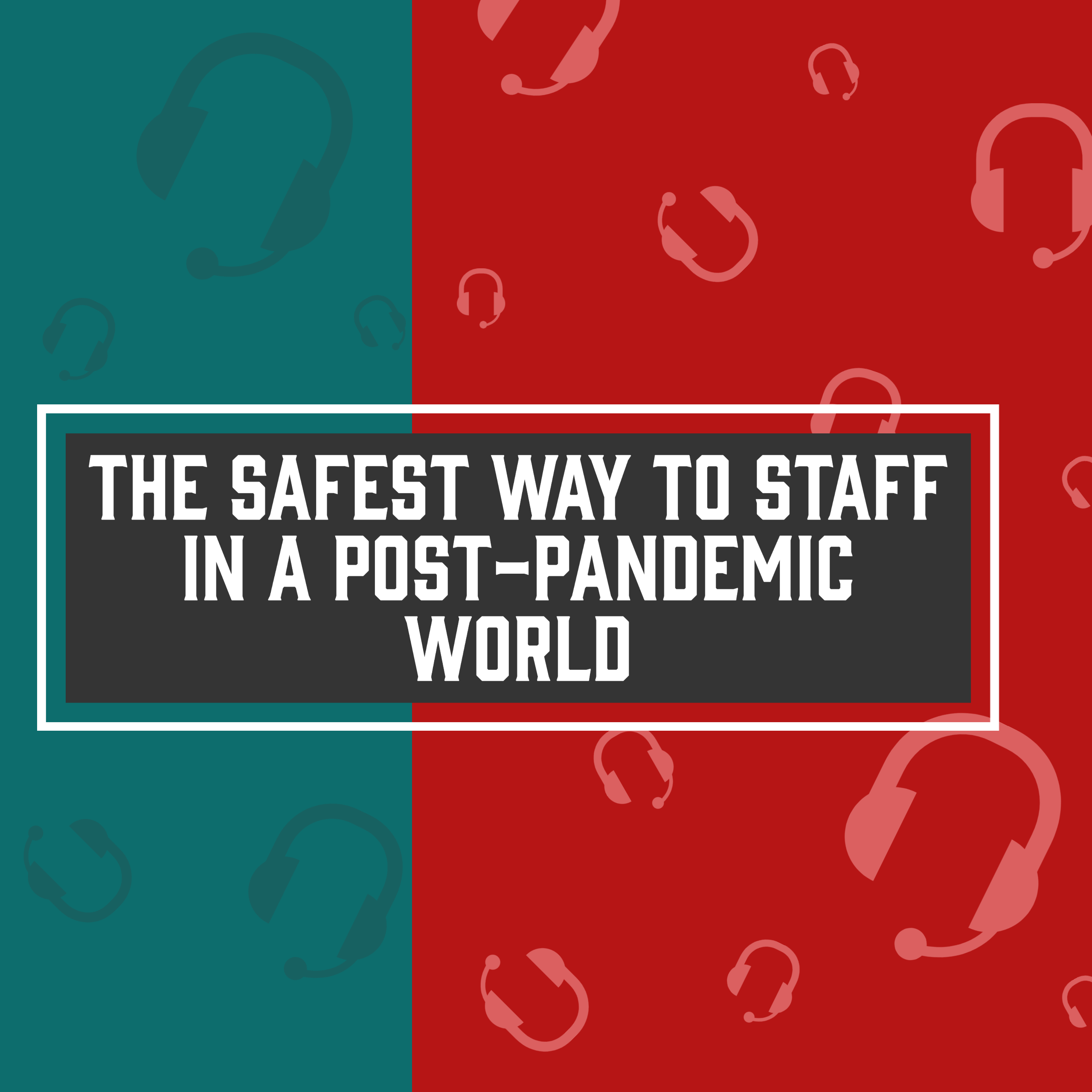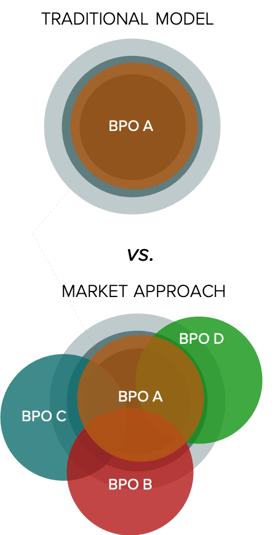

The world is changing - can your business afford to staff the same as it did pre-pandemic? COVID-19 shook up business operations across the globe and made it more clear than ever that building our businesses to withstand the unexpected has never been more important.
While the world slowly re-calibrates and establishes the new “normal”, many studies are showing unexpected and interesting trends. According to Zendesk’s CX Trends Report, “Customers picked up new habits during the pandemic, and the vast majority plan to keep them.” With new consumer behaviors likely to remain permanently, is your business prepared to scale for this “new normal”?
In this blog, we’ll talk about how to safely scale your business in a post-pandemic world and build strong partnerships that help you remain resilient when unexpected future events occur.
Not sure if your business is as well-poised as it could be to withstand another year like 2020? Ask yourself:
-
-
- When COVID hit, were you forced to furlough or even let go of many operational employees?
- If another wave of COVID hits, or any other event occurs, would you likely find yourself in a similar position, having to repeat another cycle of layoffs to maintain your business?
- If you were fortunate enough to maintain your staff through the pandemic, if another world-shaking event were to occur would you feel confident that your model could withstand the disruption?
- When considering how you plan to re-staff your support organization as the world reopens, do you wish there was a better way to staff to avoid the pain of future layoffs?
-

If your responses to the questions above left you feeling unsure of the resiliency of your business to withstand another year like 2020, the good news is you’re in the right place. We’re relieved to tell you that there is a better way to staff your business for minimal disruption when the unexpected strikes - and it shouldn’t be done in the way it was before The world has changed - so should your outsourcing strategy.
The next few steps will walk you through the modern approach to staffing including:
-
-
- Performing a risk assessment analysis
- Evaluating essential internal business functions
- Selecting strong partners for your business
- Creating redundancy in your network, and
- Managing your outsourced partners like respected teammates.
-
Start with a risk assessment analysis.
In our blog 3 Risk Assessment Tactics You Must Apply to be the CX Hero Your Business Needs, we outline in detail how to perform a risk assessment analysis of your current business operations. These three risk-assessment tactics include:
-
-
- Mapping your processes,
- Identifying potential areas of risks within your operations, and
- Quantifying the potential risks you’ve identified.
-

2020 seemed to have a way of making the vulnerabilities within our operations abundantly clear. Use that clarity to help you apply these real-world examples to your risk assessment processes. Using the hardships your operations faced in a rocky time can be a great place to start when beginning this assessment strategy.
Performing this type of analysis will help you identify all areas where your business has operational vulnerabilities. Equipped with a strong understanding of where your business holds the most risk, you’re much more easily and effectively able to establish a roadmap to cover those areas of potential risk - turning even your most detrimental vulnerabilities into an afterthought.
Evaluate which business functions are essential to keep internal.
One mistake many businesses make is thinking that everything must be done in-house, when in reality a function can usually perform with just an in-house manager or management team overseeing outsourced partners.

For example, does every business need an entire accounting department employed and operating in-house or could the business survive with an accounting manager or management team who sets and oversees deliverables from an outsourced team of agents?
Another example is in-house support. Does your business NEED to have an entirely in-house support team or could you outsource some or most of your ticket volume to a partner?
Often, business leaders or operations managers worry that they can’t trust an outsourced team to maintain the quality of work that would be executed by an internal team. (See Are Your Tickets Really Too Technical to Outsource for more details on this scenario).
While this is certainly a valid fear, outsourcing has come a long way and contact centers, especially when managed well by a strong internal leader, can be extremely effective and efficient while saving your company significant dollars.
A few of the most common functions businesses outsource include: Customer Service, Accounting, some HR functions, and IT systems. There are many resources available to help you determine which functions make sense for your organization to outsource.
Select partners who are the right fit for your business.
Once you’ve determined where it makes sense for your business to outsource based on the vulnerabilities of your operations, it’s vital to find and select partners who will be a strong fit for your organization. 3 Tips to Selecting the Right Contact Center Partner helps to identify the key areas you should place focus when on the hunt for a new vendor.
The tips described in the blog include making sure the outsourcing partner you’re considering checks all the fundamental security and compliance boxes, that they have a proven track record and history of being a strong partner, and the confidence you have that they will present your business and brand in a way that makes you proud.

Of course, your business is unique and has its own brand and voice. Find partners that place value in similar ideals as your firm does and together build a strong framework and mutual understanding of how that partner is expected to fill your needs. This understanding will be critical in getting the most out of that relationship.
Another aspect to be cognizant of when searching for the right partner is recognizing and accounting for the differences in culture within the different functions in your organization.
You will likely find the right partners to deliver high-quality, customer-centric service will be different from those who can help with revenue collection activities. Be sure to tailor your “partner criteria” to the specific function you’re looking to outsource.
Create redundancy in your network by employing a multi-vendor approach.
Redundancy. Redundancy. Redundancy. (Okay, you get the point.) But building redundancy into your network is one of the most powerful tools that many companies overlook.
By creating redundancy we mean selecting multiple vendors, where possible, who can perform overlapping functions. You might be thinking well, that sounds expensive - I can’t hire multiple companies to do the same job! That’s pointless! But that’s not exactly what we’re suggesting.

We refer to this method of creating redundancy as applying a portfolio approach to your outsourcing strategy. This allows you to reduce risk while minimizing cost and maximizing partner performance. In this blog we discuss the importance of diversifying crucial vendor relationships and explain the benefits of applying a market approach to outsourcing.
In short, a portfolio approach provides you with a handful of partners you can tap when you need them so you don’t have to worry about one partner experiencing an unanticipated hiccup in their service.
Using customer support outsourcing as an example, by applying a portfolio approach and having a few overlapping partners, if you or your partner’s network goes down unexpectedly, your ticket volume would simply shift and be dispersed among the others in your network who are ready and able to handle the increased volume.
Because you leveraged a portfolio approach, instead of having a major issue with a downed system, you barely even experienced an inconvenience in your operations. When all of your bases are covered, you’re well-equipped to adapt to the unexpected.
Manage your outsourced team like a true partner.
If you want your outsourced team to represent your business LIKE your business, it’s important to treat your outsourced team just as you would your internal team. Something as simple as including them in your team’s messaging platform, or giving them a corporate email address can make them feel like a true part of your team vs. an outsider.
The more you make your partners feel included and valued as a true team member and critical to your operations, the more committed they will be to your brand and to your mission. Do your part to set them up for success and, hopefully, gain a partner you can trust and depend on for years to come.
By taking this new approach to outsourcing in a post-pandemic world, you’ll be setting yourself up to not only create and maintain better, stronger vendor relationships but also by applying a portfolio approach and mapping your processes you’re building a stronger foundation to weather the future unknowns.
Not sure where to get started? We're happy to help! Simply start a chat and a member of the ArenaCX team will be happy to help!
Subscribe and stay up to date
receive essential emails.






Speak Your Mind